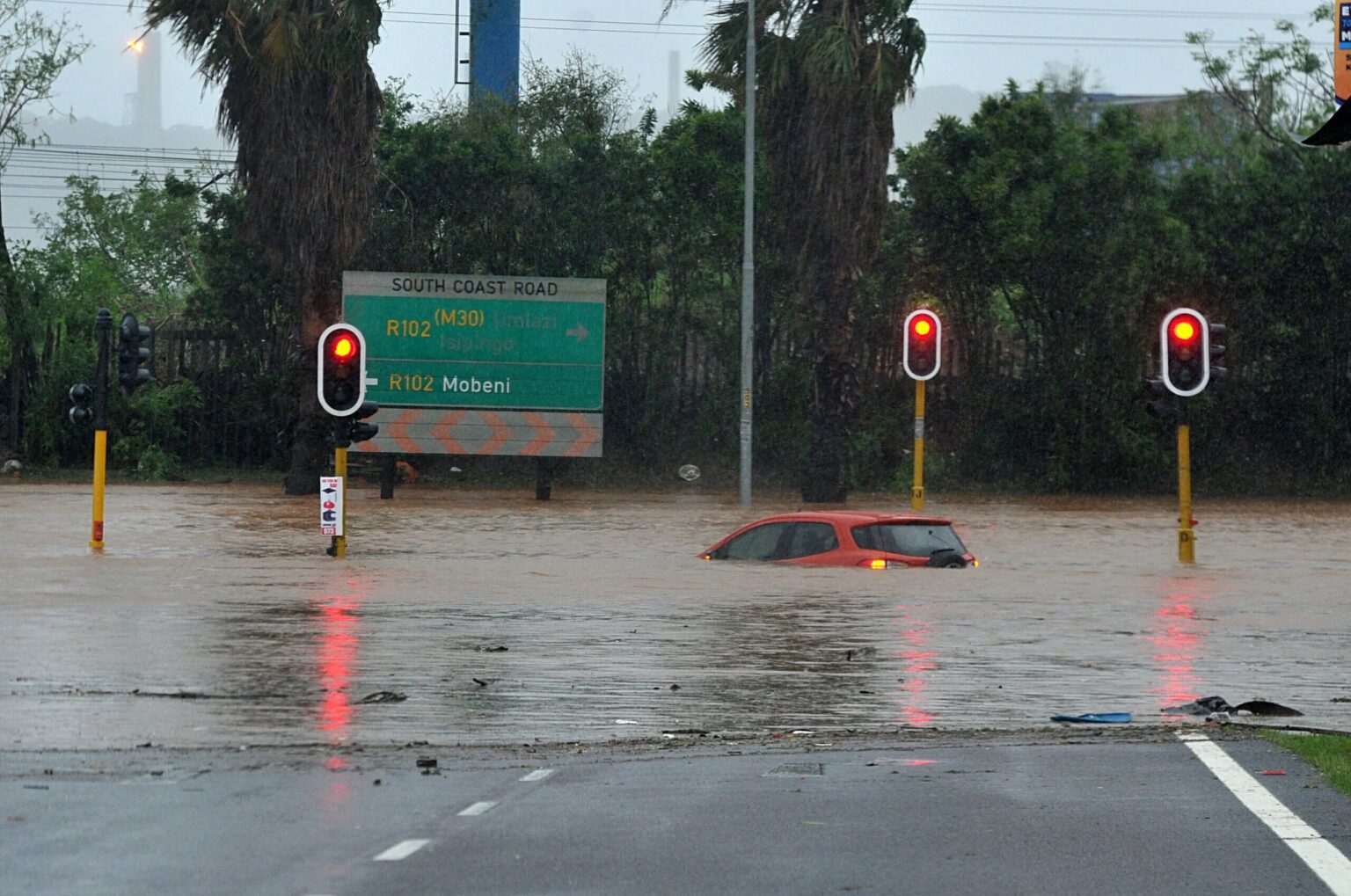In early June 2025, South Africa’s Eastern Cape province witnessed one of the most severe flooding events in its recent history. Days of relentless rainfall resulted in overflowing rivers, submerged towns, and catastrophic losses. What started as seasonal rain turned into a widespread emergency. It caught many residents off guard and overwhelmed local disaster response systems.
The Making of a Disaster: What Triggered the Floods?
The flooding kicked off after a particularly intense weather system settled over the area as early as June 6th. Meteorologists noted that several towns, especially Gqeberha, Mthatha, and East London, received more than 200 mm of rain in under 48 hours. This heavy downpour is driven by a warmer Indian Ocean and possibly tied to larger climate changes. It quickly soaked the ground and overwhelmed drainage systems.
The South African Weather Service had issued warnings, but the sheer scale and speed of the floodwaters caught many off guard. In just a few hours, rivers like the Buffalo and Keiskamma overflowed, flooding roads, homes, and farmland.
Town by Town: Where the Waters Hit Hardest
The regions that suffered the most include:
Buffalo City Municipality
The rising rivers in Buffalo City Municipality swept away numerous informal settlements. It was a sudden blow to the residents.
Gqeberha (previously Port Elizabeth)
Major highways were shut down due to urban flooding, leaving residents stuck inside their homes. It was an unprecedented event for the residents of Gqeberha.
OR Tambo District
Landslides and road collapses have cut off entire villages from help and evacuation efforts, creating a dangerous situation for the people living there.
Over 40 communities have reported severe damage to their infrastructure, including collapsed bridges, eroded roads, and fallen power lines.
Lives Uprooted: The Human Cost of the Deluge
According to the Eastern Cape Disaster Management Centre, at least 36 lives have been tragically lost. The number could still climb as search and rescue operations are ongoing. Over 12,000 residents have been forced to leave their homes, with many finding shelter in emergency facilities and schools. Muddy waters have engulfed entire neighbourhoods. It left families with only the belongings they could grab. In Alice, witnesses recounted seeing their homes “float away” as the water levels surged to waist height in just a few minutes.
Racing Against Time: Rescue Efforts and Relief Work
Seeing the worsening situation, local and national authorities launched emergency measures to support the affected population. The South African National Defence Force (SANDF) emerged as a big rescue player; it deployed helicopters for aerial rescues in numerous remote rural areas. Some humanitarian groups, like Gift of the Givers, distributed food parcels, blankets, and clean water to those in need.
Community members have been critical of the government’s slow response. Many flood victims in informal settlements say they did not get any warnings or support, even days after the disaster started. With roads turned to mud and access blocked, reaching those isolated areas is a real struggle.
Counting the Losses
The financial impact of the Eastern Cape floods is still being assessed, but initial estimates indicate that the damage could surpass R1.2 billion (around $65 million).
Several key sectors have been hit hard, including:
Agriculture
Many crops have been ruined, and livestock have perished in the flooded fields. It is one of the sectors most affected by these floods.
Transport
Roads and railways are closed indefinitely, disrupting local travel and supply chains. Consequently, traveling has become quite challenging for people, even local travelers.
Energy
Numerous towns are experiencing power outages due to damaged substations and downed power lines. This directly affects people’s lives, homes, and businesses.
Is Climate Change Making Floods the New Normal?
Experts say this flood is not just a one-off weather incident but a warning sign of more frequent and severe climate extremes in Southern Africa. The warmer sea temperatures in the Mozambican Channel are thought to be adding more moisture to the atmosphere, which in turn is leading to stronger storms.
Over the past decade, South Africa has experienced a troubling cycle of droughts followed by floods. Scientists caution that this pattern will only worsen unless we reduce global emissions.
Bracing for More: What Residents Need to Know Now
As weather patterns continue to be erratic, forecasters warn that more rain will soon be expected. Officials urge residents to remain cautious, avoid flooded roads, and keep their emergency kits prepared.
There’s mounting pressure on the South African government to enhance early warning systems and implement better urban planning. Moreover, they are also being pressured to create sustainable flood resilience strategies, especially in at-risk provinces like the Eastern Cape.
Final Word: Will We Be Ready Next Time?
The floods in the Eastern Cape serve as a potent reminder that natural disasters are becoming increasingly common, intense, and unpredictable. Beyond the statistics and news reports lie real lives. Families who have lost everything are now faced with the arduous journey of rebuilding.
This disaster should be a wake-up call as South Africa works towards recovery. We must focus on better preparedness, climate-smart infrastructure, and fostering community resilience. These steps are no longer optional; they are urgently needed.




